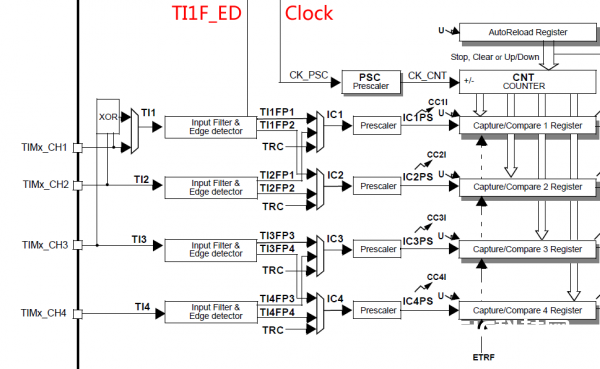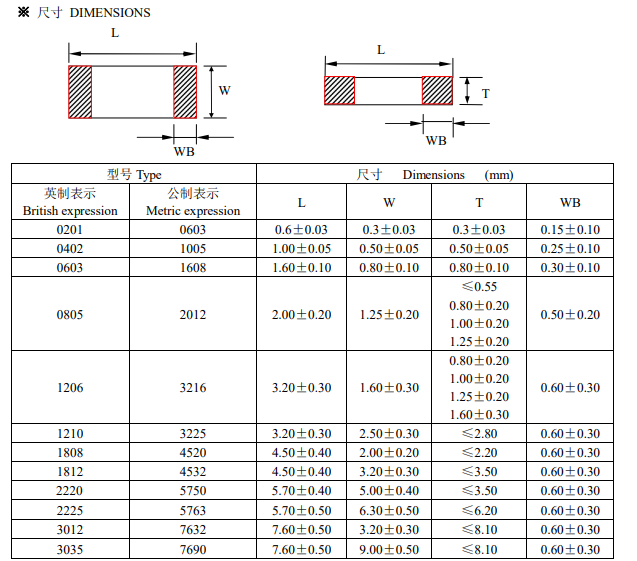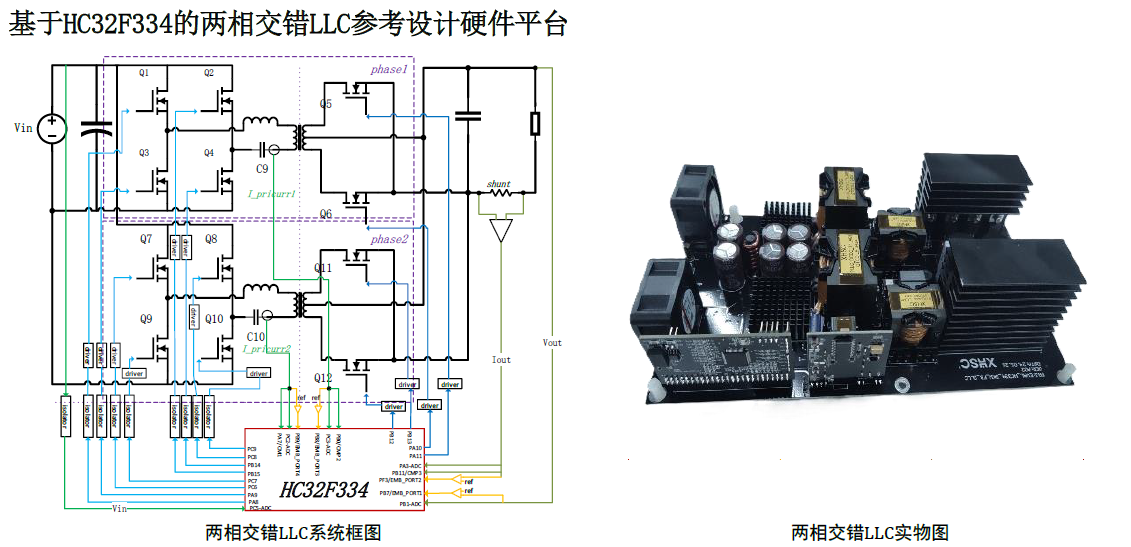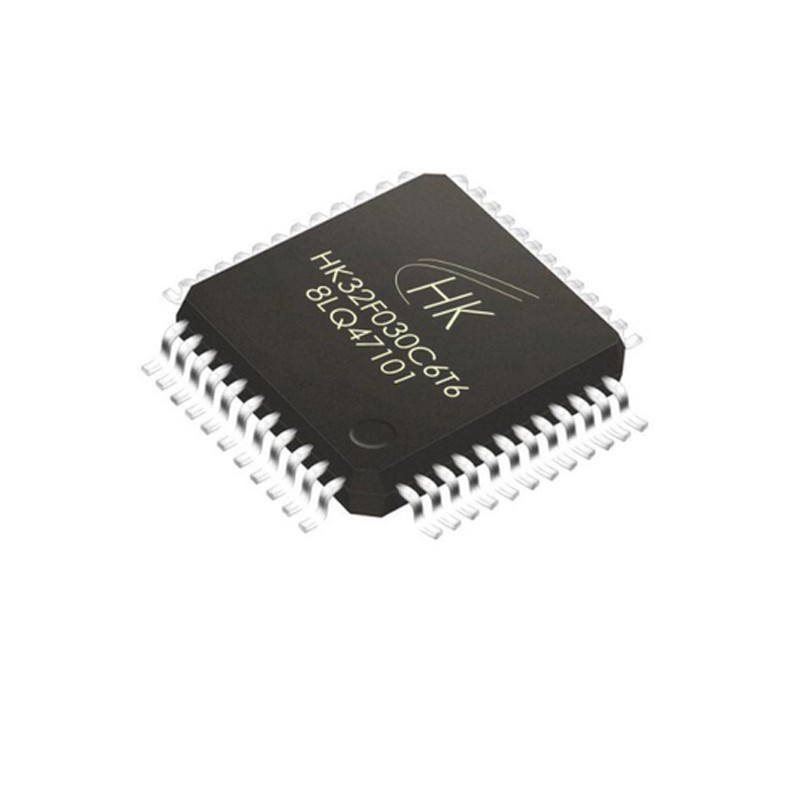参阅:STM32的PWM输入形式设置并用DMA接纳数据
Input capture mode
The input stage samples the corresponding TIx input to generate a filtered signal TIxF.
Then, an edge detector with polarity selection generates a signal (TIxFPx)
which can beused as trigger input by the slave mode controller or as the capture command.
It isprescaled before the capture register (ICxPS).


In Input capture mode, the Capture/Compare Registers (TIMx_CCRx) are used to latch thevalue of the counter
after a transition detected by the corresponding ICx signal.
When acapture occurs, the corresponding CCXIF flag (TIMx_SR register) is set and an interrupt
ora DMA request can be sent if they are enabled.
If a capture occurs while the CCxIF flag wasalready high, then the over-capture flag CCxOF (TIMx_SR register) is set.
CCxIF can becleared by software by writing it to ‘0’ or by reading the captured data stored in theTIMx_CCRx register.
CCxOF is cleared when you write it to ‘0’.
The following example shows how to capture the counter value in TIMx_CCR1 when TI1input rises.
To do this, use the following procedure:
Select the active input:
TIMx_CCR1 must be linked to the TI1 input, so write the CC1Sbits to 01 in the TIMx_CCMR1 register.
As soon as CC1S becomes different from 00,the channel is configured in input and the TIMx_CCR1 register becomes read-only.
Program the input filter duration you need with respect to the signal you connect to thetimer
(by programming ICxF bits in the TIMx_CCMRx register if the input is a TIx input).
Let’s imagine that, when toggling, the input signal is not stable during at must 5 internalclock cycles.
We must program a filter duration longer than these 5 clock cycles.
Wecan validate a transition on TI1 when 8 consecutive samples with the new level havebeen detected (sampled at fDTS frequency).
Then write IC1F bits to 0011 in theTIMx_CCMR1 register.
Select the edge of the active transition on the TI1 channel by writing CC1P and CC1NPbits to 0
in the TIMx_CCER register (rising edge in this case).
Program the input prescaler. In our example, we wish the capture to be performed ateach valid transition,
so the prescaler is disabled (write IC1PS bits to ‘00’ in theTIMx_CCMR1 register).
Enable capture from the counter into the capture register by setting the CC1E bit in theTIMx_CCER register.
If needed, enable the related interrupt request by setting the CC1IE bit in theTIMx_DIER register,
and/or the DMA request by setting the CC1DE bit in theTIMx_DIER register.
When an input capture occurs:
The TIMx_CCR1 register gets the value of the counter on the active transition.
CC1IF flag is set (interrupt flag). CC1OF is also set if at least two consecutive capturesoccurred whereas the flag was not cleared.
An interrupt is generated depending on the CC1IE bit.
A DMA request is generated depending on the CC1DE bit.
In order to handle the overcapture, it is recommended to read the data before theovercapture flag.
This is to avoid missing an overcapture which could happen after readingthe flag and before reading the data.
Note:
%&&&&&% interrupt and/or DMA requests can be generated by software by setting thecorresponding CCxG bit in the TIMx_EGR register.
STM32输入捕获形式设置并用DMA接纳数据
本文博客链接:http://blog.csdn.net/jdh99,作者:jdh
环境:
主机:WIN7
开发环境:MDK4.72
MCU:STM32F103
阐明:
项目中需求进行红外学习,所以选用输入捕获取得电平改变时刻.并将数据放在DMA中.这样能够防止频频中止耗费CPU资源.
选用的是PB1脚,对应TIM3的通道4.
/********************************************************************** 接口函数:初始化红外学习模块**********************************************************************/void inf_infrared_study_init(void){//初始化io口inf_init_io();//初始化中止//inf_init_irq();//初始化定时器inf_init_timer();//翻开DMAinf_infrared_study_open_dma(1);//翻开定时器inf_infrared_study_open_timer(1);}/********************************************************************** 初始化io口**********************************************************************/static void inf_init_io(void){//界说IO初始化结构体GPIO_InitTypeDef GPIO_InitStructure;//初始化时钟RCC_APB2PeriphClockCmd(RCC_APB2Periph_GPIOB,ENABLE);//管脚初始化 GPIO_InitStructure.GPIO_Pin = GPIO_Pin_1;//设置为输入 GPIO_InitStructure.GPIO_Mode = GPIO_Mode_IN_FLOATING; //初始化 GPIO_Init(GPIOB, &GPIO_InitStructure); }/********************************************************************** 初始化中止**********************************************************************/static void inf_init_irq(void){//界说外部中止结构体EXTI_InitTypeDef EXTI_InitStructure;//初始化中止脚复用时钟RCC_APB2PeriphClockCmd(RCC_APB2Periph_AFIO,ENABLE);//装备中止源GPIO_EXTILineConfig(GPIO_PortSourceGPIOB,GPIO_PinSource1);// 装备下降沿触发EXTI_ClearITPendingBit(EXTI_Line1);EXTI_InitStructure.EXTI_Line = EXTI_Line1;EXTI_InitStructure.EXTI_Trigger = EXTI_Trigger_Falling;EXTI_InitStructure.EXTI_Mode = EXTI_Mode_Interrupt;EXTI_InitStructure.EXTI_LineCmd = ENABLE;EXTI_Init(&EXTI_InitStructure);}/********************************************************************** 初始化定时器**********************************************************************/static void inf_init_timer(void){//界说定时器结构体TIM_TimeBaseInitTypeDef timInitStruct;//输入捕获结构体TIM_ICInitTypeDef tim_icinit;//界说DMA结构体DMA_InitTypeDef DMA_InitStructure;//发动DMA时钟RCC_AHBPeriphClockCmd(RCC_AHBPeriph_DMA1, ENABLE);//DMA1通道3装备DMA_DeInit(DMA1_Channel3);//外设地址DMA_InitStructure.DMA_PeripheralBaseAddr = (uint32_t)(&TIM3->CCR4);//内存地址DMA_InitStructure.DMA_MemoryBaseAddr = (uint32_t)Rx_Buf_Tim_Dma;//dma传输方向单向DMA_InitStructure.DMA_DIR = DMA_DIR_PeripheralSRC;//设置DMA在传输时缓冲区的长度DMA_InitStructure.DMA_BufferSize = RX_LEN_TIM_DMA;//设置DMA的外设递加形式,一个外设DMA_InitStructure.DMA_PeripheralInc = DMA_PeripheralInc_Disable;//设置DMA的内存递加形式DMA_InitStructure.DMA_MemoryInc = DMA_MemoryInc_Enable;//外设数据字长DMA_InitStructure.DMA_PeripheralDataSize = DMA_PeripheralDataSize_HalfWord;//内存数据字长DMA_InitStructure.DMA_MemoryDataSize = DMA_MemoryDataSize_HalfWord;//设置DMA的传输形式//DMA_InitStructure.DMA_Mode = DMA_Mode_Normal;DMA_InitStructure.DMA_Mode = DMA_Mode_Circular;//设置DMA的优先等级DMA_InitStructure.DMA_Priority = DMA_Priority_High;//设置DMA的2个memory中的变量相互拜访DMA_InitStructure.DMA_M2M = DMA_M2M_Disable;DMA_Init(DMA1_Channel3,&DMA_InitStructure); //舱位时钟RCC_APB1PeriphClockCmd(RCC_APB1Periph_TIM3,ENABLE);//从头将Timer设置为缺省值TIM_DeInit(TIM3);//选用内部时钟给TIM3供给时钟源TIM_InternalClockConfig(TIM3);//预分频timInitStruct.TIM_ClockDivision = TIM_CKD_DIV1; //计数频率为500ns跳转1次 timInitStruct.TIM_Prescaler = SystemCoreClock / 2 - 1; //向上计数 timInitStruct.TIM_CounterMode = TIM_CounterMode_Up; timInitStruct.TIM_RepetitionCounter = 0;//这个值实际上便是TIMX->ARR,延时开始时从头设定即可 timInitStruct.TIM_Period = 0xffff; //初始化定时器3TIM_TimeBaseInit(TIM3, &timInitStruct);//输入捕获装备//挑选通道tim_icinit.TIM_Channel = TIM_Channel_4;//硬件滤波tim_icinit.TIM_ICFilter = 0x0;//触发捕获的电平tim_icinit.TIM_ICPolarity = TIM_ICPolarity_Falling;//每次检测到触发电平都捕获tim_icinit.TIM_ICPrescaler= TIM_ICPSC_DIV1;//通道方向挑选tim_icinit.TIM_ICSelection = TIM_ICSelection_DirectTI;//初始化TIM_ICInit(TIM3,&tim_icinit);//制止ARR预装载缓冲器 TIM_ARRPreloadConfig(TIM3, DISABLE); //输入跳变挑选TIM_SelectInputTrigger(TIM3, TIM_TS_TI2FP2);//从机形式:复位形式TIM_SelectSlaveMode(TIM3, TIM_SlaveMode_Reset);//主从形式挑选TIM_SelectMasterSlaveMode(TIM3, TIM_MasterSlaveMode_Enable);//装备定时器的DMATIM_DMAConfig(TIM3,TIM_DMABase_CCR4,TIM_DMABurstLength_2Bytes);//发生DMA恳求信号TIM_DMACmd(TIM3, TIM_DMA_CC4, ENABLE);//翻开定时器TIM_Cmd(TIM3, ENABLE);}/********************************************************************** 接口函数:翻开定时器*参数:state:状况:0:封闭,1:翻开**********************************************************************/void inf_infrared_study_open_timer(uint8_t state){if (state){TIM_Cmd(TIM3, ENABLE);}else{TIM_Cmd(TIM3, DISABLE);}}/********************************************************************** 接口函数:翻开中止*参数:state:状况:0:封闭,1:翻开**********************************************************************/void inf_infrared_study_open_irq(uint8_t state){//界说中止结构体NVIC_InitTypeDef NVIC_InitStructure ;if (state){//翻开中止NVIC_InitStructure.NVIC_IRQChannel = EXTI1_IRQn; //通道设置为外部中止线NVIC_InitStructure.NVIC_IRQChannelPreemptionPriority = 1; //中止抢占先等级NVIC_InitStructure.NVIC_IRQChannelSubPriority = 0; //中止呼应优先级NVIC_InitStructure.NVIC_IRQChannelCmd = ENABLE; //翻开中止NVIC_Init(&NVIC_InitStructure); //初始化}else{//封闭中止NVIC_InitStructure.NVIC_IRQChannel = EXTI1_IRQn; //通道设置为外部中止线NVIC_InitStructure.NVIC_IRQChannelPreemptionPriority = 1; //中止抢占先等级NVIC_InitStructure.NVIC_IRQChannelSubPriority = 0; //中止呼应优先级NVIC_InitStructure.NVIC_IRQChannelCmd = DISABLE; //翻开中止NVIC_Init(&NVIC_InitStructure); //初始化}}/********************************************************************** 接口函数:翻开DMA*参数:state:状况:0:封闭,1:翻开**********************************************************************/void inf_infrared_study_open_dma(uint8_t state){if (state){//设置传输数据长度//DMA_SetCurrDataCounter(DMA1_Channel3,RX_LEN_TIM_DMA);//翻开DMADMA_Cmd(DMA1_Channel3,ENABLE);}else{DMA_Cmd(DMA1_Channel3,DISABLE);}}/********************************************************************** 接口函数:得到DMA接纳帧长*回来:帧长**********************************************************************/uint16_t inf_infrared_study_dma_rx_len(void){//取得接纳帧帧长return (RX_LEN_TIM_DMA - DMA_GetCurrDataCounter(DMA1_Channel3));}
留意:
除TIM6和TIM7之外的定时器都只能选用上升沿或许下降沿捕捉而不能选用双边缘捕捉.
#define TIM_ICPolarity_Rising ((uint16_t)0x0)#define TIM_ICPolarity_Falling ((uint16_t)0x2)#define TIM_ICPolarity_BothEdge ((uint16_t)0xA)#define IS_TIM_IC_POLARITY(POLARITY) (((POLARITY) == TIM_ICPolarity_Rising) ((POLARITY) == TIM_ICPolarity_Falling))#define IS_TIM_IC_POLARITY_LITE(POLARITY) (((POLARITY) == TIM_ICPolarity_Rising) ((POLARITY) == TIM_ICPolarity_Falling) ((POLARITY) == TIM_ICPolarity_BothEdge))









